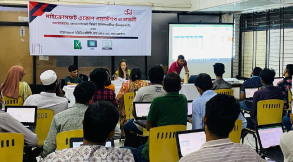In many low income countries, a regulated formal sector and an unregulated informal sector coexist within the same industry and occupation. In Bangladesh, the readymade garment (RMG) industry has been a key source of urban economic growth, but still has a high degree of informal jobs at unregulated or underregulated factories. These informal jobs often involve the same job tasks but provide fewer protections to workers. The goal of this project is to understand why individuals sort into informal jobs and what explains the observed lack of mobility away from low-paying informal jobs. One explanation is search frictions in the informal sector—a lack of access to formal job networks, for example. A second explanation is that certain workers have preferences for nonwage features of jobs such as good supervisors or flexibility in working hours that make them more likely to seek out informal arrangements. This project quantifies the importance of each explanation in explaining workers’ employment outcomes.
There are two main challenges to identifying the importance of each proposed channel of worker sorting. First, there is scarce data on job mobility and informal firm amenities in Bangladesh. To address this gap, the author surveys 644 garment workers in Dhaka about their past jobs and constructs a retrospective panel of jobs and amenities across the formal and informal sectors. Second, observing workers’ job choices is not sufficient to pinpoint their willingness-to-pay (WTP) for specific amenities since they may be restricted in their choices. Certain amenities like flexible leave may not be offered at the same rates by jobs in both sectors, limiting worker choices. Additionally, search frictions may prevent workers from finding their most preferred job. To address this challenge, the author conducts a choice experiment where respondents are asked to pick between two hypothetical job offers with varying salaries and amenities (specifically, supervisor quality, flexible leave, overtime rates, and factory formality). This reveals workers’ underlying valuations for amenities when they are free to choose any combination of wages and amenities. Then, the author builds and estimates a model of job search incorporating both search frictions and preferences, allowing an investigation into which channel contributes the most to the observed lack of worker mobility.
Understanding why workers choose to work at informal rather than formal jobs is critical to crafting effective labour market policy. Forecasting the effect of policies like unemployment insurance requires an understanding of both the formal and informal sectors of the labour market. Linkages and policy spillovers between the formal and informal sectors are not well studied in the literature and can be analysed using the model developed in this project. Further, characterising people’s preferences is key to understanding how to tailor policies in a way that will best serve the interests of workers.














































